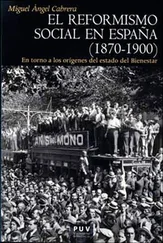This manifesto was a landmark event in the history of the Church. As previously stated, the Church was forced to abandon part of its beliefs in what some members understood as bowing to the Federal Government. The truth is that after the Manifesto was signed, the laws against the Mormons were eased and the claim for statehood began a rapid process towards completion. It was, in fact, the beginning of a period of integration and consolidation. The end of that period and the achievement of statehood, allowed Utah to try to move into the American mainstream in terms of politics and economy (Arrington, Mormon 242). Many cooperatives were privatized and, in fact, the Church did not hesitate to effect a complete change in its economic ethics. The missionary effort of the Mormon Church nearly tripled in size, and missionaries were even sent to places like Samoa, Tonga, and Hawaii which altered the migration tendency. European immigration to Utah receded. But this was not the only change in the Church’s politics on migration. The focus of the Church was also new. Converts were encouraged to found churches in their homelands rather than to emigrate to the United States (Oman 70). All Presidents in charge during these years strove to balance the changes to the Church during the first half of the 20 thcentury with the preservation of old values. The Church tried to modernize its official structure, while simultaneously retaining traditional values and remaining faithful to the moral and cultural codes of Mormonism. Since the first half of the century, it has been a time for social, cultural, political and even economic integration of the Church into mainstream American society, but also for internal consolidation. This pattern increased in the second half of the century, exemplified by the new involvement of the Church in the politics and the economy of the United States, but also by the measure of growing concern about the dangers of this integration.
The growth of the Church was noteworthy by the end of the first half of the 20 thcentury. In 1947, the Church tallied one million members. As emphasised above, the 20 thcentury was marked by the growing internationalization of the Church, as well as its integration into the American mainstream: a process that provides both flattering assumptions for understanding the nature of Mormon culture, and an opening up to new definitions from different approaches. Today, most Mormons live outside of the Utah Mormon country 9and, as Joanna Brooks perfectly summarizes, the “phenotype” for Mormons has changed completely (Brooks, Genealogy 294). Present-day Mormonism launches a very different image of Mormon identity, one oriented both to the communal and the individual. 19 thcentury rural Mormonism has developed into an urban culture in which different tensions combine to weave a much more heterogeneous community. For instance, contemporary Mormonism invites researchers to pay special attention to the birth of the feminist movement. This critical, social, cultural, and political movement (complex and varied in itself) illustrates the multiple changes and processes occurring in Mormonism during the second half of the 20 thcentury, but there are many other social changes and cultural affairs that could have been chosen to exemplify this growing complexity. I choose feminism here, because it is related to many topics that I develop in my subsequent analysis of Phyllis Barber’s books.
In this summary, a critical reader perceives the progressive development of this religious group into a category that seems bigger and much more complex. Above, I emphasized the pervasive importance that the pioneer period had in the construction of Mormon identity. It is probable that the experience gathered through these first years of continuous movement and enterprise enhanced the stability of the group beyond that which conventional affiliation of religious groups tends to achieve. The historical role of the Mormons in the pioneering of the American West cannot be ignored. Mormons opened one of the two most important trails in the general move westward—the so-called Mormon Trail—and they contributed to the beginnings of many of those original settlements that are now modern cities. Looking back at this period, the impression that remains is that Mormon experience of the frontier opens a different approach to the conquering of the American West. Mormons played a distinct and peculiar role in the conquering of the American West, because no one is so far from Daniel Boone as Brigham Young, even though they were practically in the same place at the same time. Mormons presented a set of values very different from the stereotype favored by mythic interpretation of the frontier. In that sense, they opened a way to a complex and dynamic understanding of a reality which, as it passed into history, has been subjected to mythical interpretations. For the Mormons, the American West permeates the same notions of “quest and the prospect of fulfillment” (Dippie 117) that prompted different people in that direction. If the Mormon story is labeled peculiar, it is because it is slightly different in source but alike in disguise. Mormons conquered, and built a kingdom where there was only a desert and a lake of undrinkable water. In his landmark book, “It’s Your Misfortune and None of My Own:” A New History of the American West , Richard White proposes the understanding of the American West as “a set of relationships” ( It’s 538). The Mormon experience of the American West asserts White’s idea of it as a complex space, full of paradoxes, different dimensions and perspectives. Mormons crossed the plains, opened the way to migrants, and set in motion a system of proselytizing which took in new immigrants from such places as Sweden and Norway, helping to compose the multicultural brew that today enriches American identity. But that is not the only contribution by the Mormons.
A second contribution by the Mormons—and not a positive one for them—is key to the complexity I refer to when I place Mormons within the context of the American West. During the second half of the 19 thcentury, the United States of America saw a national quest for a new national identity. In this quest, Mormons were given the role of the Other—providing an example of what this new identity was not. Constructing an identity by contrast to another is not something that was invented in America. Werner Sollors argues that ethnicity is not essential but invented, not a “conspirational interpretation of manipulative inventor” but some “intensely debated, collective fictions that are continually reinvented” (xi). Following Sollors’s cue, Mormons, at the time of the construction of American identity, were given the role of the villain that faces the hero in this “collective fiction.” And, as White explains, choosing Mormons for that role was in itself paradoxical: “that Mormons should be tainted with the brush of un-Americanism is particularly ironic because Mormonism is in many ways the most American of religions” (White, It’s 163).
The Mormon scholar Terryl L. Givens associates this tendency with the idea of Mormon religious genius and he argues that in order to understand the Mormon compulsion to develop into an ethnic category of their own, the stress ought to be put on these confronting outsider forces rather than on the Mormons’ own conception of themselves as a peculiar people: “On the other hand, the position of Mormonism in the margins of American ethnicity suggests the substantial degree to which identity can be—and in this case has been—manipulated” (Givens, Viper 18). It is Givens’ impression that the quasi-ethnic status relies on what he calls “the malleability of ethnic categories” (Givens, Viper 18) but also on “the role of popular fiction” (Givens, Viper 18), which help to establish a self-representation in which the Mormons adopted the position of the other to use that difference in order to shape their own identity. Paradoxically, perhaps the opposite group worked towards the same aim: both sides were taking advantage of this game to shape their identities. In short, two different forces work to complicate the easy conclusion that Mormon ethnic consideration is basically derived from a strong stress upon community-bonds and peculiarity. Mormons participated in the global evolution of the new country, sometimes paralleling it, sometimes confronting or opposing it. Attention to outside interests is key for understanding this process.
Читать дальше












